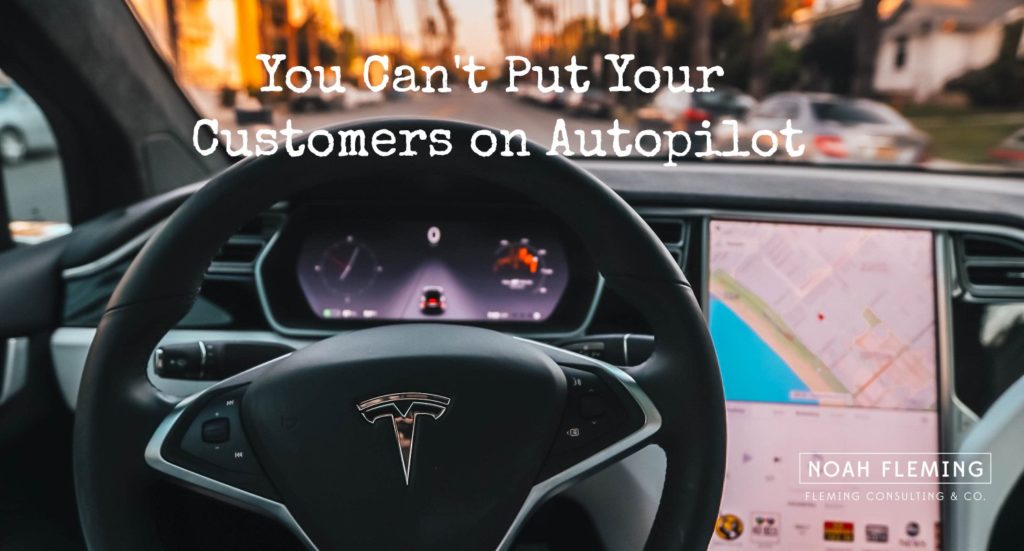Last week I picked up a Tesla Model 3.
It's time to put the Land Rover away and we wanted to get a small second car for our family.
I took the train to the Toronto area where I picked up the Tesla, and then I basically had the Tesla drive me home.
Before you ask, this wasn't me.
Leaving the car parked next to my 1970 Land Rover for a few days has been fascinating. It's remarkable to see how much has changed in exactly 50 years.
Within just a couple of days of owning the Tesla, I received the first over-the-air update providing the car with some new features. Most Tesla owners suggest that it's the first car they've ever bought that continues to get better months and even years after owning it.
Needless to say, I am enjoying the car and the experience but I'll never sell my Land Rover!
The product and the company, though, aren't perfect. New models are known to have quality issues. Service isn't ideal, and the customer experience leaves a lot to be desired.
It's really baffling to me how easy it would be to fix these areas, but it doesn't seem to be a priority. I don't think Elon is a Tuesday Tidbit reader, but he should be as he would benefit greatly.
I've often said that anyone can get the first sale, but getting the second, third and fourth sale are more challenging. I thought this week we would look at customer experience and some of the simple steps we can all take to improve in this area.
Let me share some examples.
I purchased the Tesla online.
This was pretty cool. After a few clicks of the mouse, I was taken to a checkout screen where I was able to purchase the car.
Next, I had some steps to complete in my account. I did that promptly, but then I heard from no one for about a week. No acknowledgment, nothing.
About 10 days later I got a text telling me that my scheduled delivery date would be the following Saturday, about 8 days later, at noon.
Finally, I got an email from my Service Advisor who said he would be my point of contact moving forward. Service advisors seem hit or mess. I had some questions for my advisor, and I'd either get a response about 48 hours later or none at all.
The day before pickup, I got an automated text suggesting it would be a contactless pickup. It said I would have 30 minutes with the vehicle where I could inspect it for any issues, sign a couple of papers and drive off. I found it particularly fun that they suggested I watch tutorials on how to operate a Tesla before pickup.
However, the vehicle pickup was everything but contactless. The whole process took about 3 hours. The place was jammed. And there was a lot of time spent waiting around, even though I had a scheduled time. Even worse, they knew I was coming from out of town, and they didn't bother to charge the vehicle.
More often than not, it's the little things that matter.
We're talked about the power of checklists before and while I was equipped with a checklist from other Tesla buyers, I have to wonder if the dealership is following any sort of delivery checklist at all.
All in all, I'm very happy with the purchase, but these little things would be so easily improved and have offered such a dramatic improvement. Remember, little hinges swing big doors. I wouldn't hesitate to tell people I love the car, but I'd also take the time to make sure they know what they're getting into.
Tomorrow, Tesla Mobile service is supposed to come to my house and fix a few minor annoyances. I'll keep you posted.
So your challenge for this week:
Consider the following questions.
In a virtual world, are you doing enough to provide a great experience to your clients? If not, what would it take to make some big improvements?
For example, before shipping your product, does your team need a pre-delivery checklist to ensure the small things aren't missed?
Do you need to set a standard process or expectation for response times?
And if so, how will management know when the expectation isn't met?
What could you do to communicate more frequently with clients pre and post-purchase?
These are just a few of the areas I'm currently working on with existing clients.
In what ways can you improve in these areas?
How can you improve your customer experience as we move into 2021?
How can you adapt your customer experience for the virtual environment we may be operating in for the next little while?
Car are starting to drive themselves. But you can’t put your customer experience on autopilot and expect it not to crash.
Best,
Noah
P.S. In other news, I've been asked more frequently about virtual training and keynote sessions.
For example, I've been asked about delivering my 1-Day Sales Process in a virtual environment and various team meetings. If you're looking to provide your team with an interactive, highly-applicable session, feel free to get in touch.
